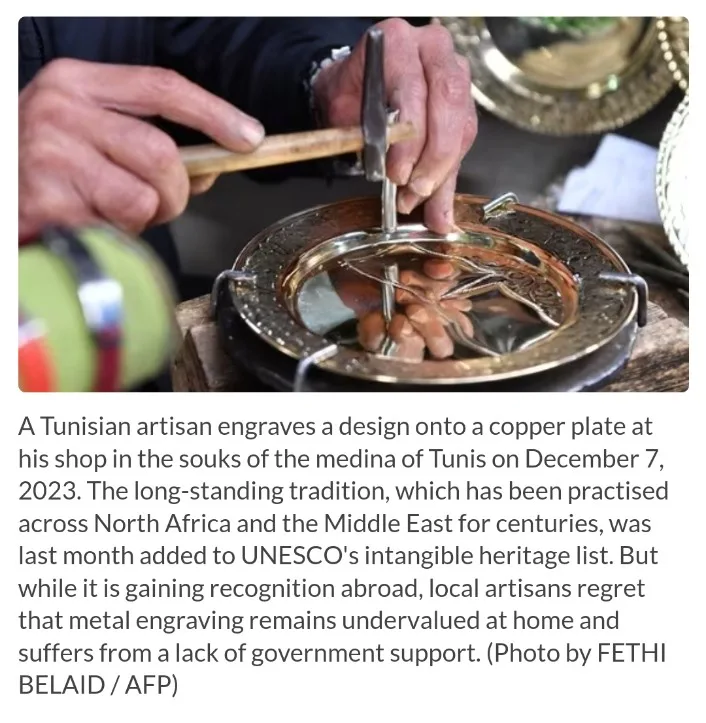Mohamed Amine Htiouich, a 37-year-old Tunisian artisan, continues the age-old tradition of metal engraving, a craft recently acknowledged by UNESCO. Trained in the family’s workshop in the old medina of Tunis, Htiouich is dedicated to preserving this ancient art form. UNESCO’s recent addition of metal engraving to its intangible heritage list aims to safeguard this exceptional know-how.
While gaining international acclaim, local artisans express concerns about the undervaluation of metal engraving within their home countries and the lack of government support. Imed Soula, a Tunisian artisan involved in the nomination process, emphasized the commitment to preserving this exceptional craft.
Artisans like Chiheb Eddine Ben Jabballah in Tunisia and Abdelilah Mounir in Morocco see potential benefits in tourism and commerce with UNESCO’s recognition. However, they also highlight challenges such as short apprenticeships and a scarcity of skilled craftsmen.
In Libya, artisans, including Youssef Chouchine, face obstacles due to a lack of support in a post-conflict environment. Algeria experiences a demand for engraved metal, but public initiatives are limited.
While the UNESCO designation brings international attention, challenges persist locally. Despite these hurdles, craftsmen like Walid Sellami in Algeria express pride in the increased recognition of their ancestral craft.
By AFP







